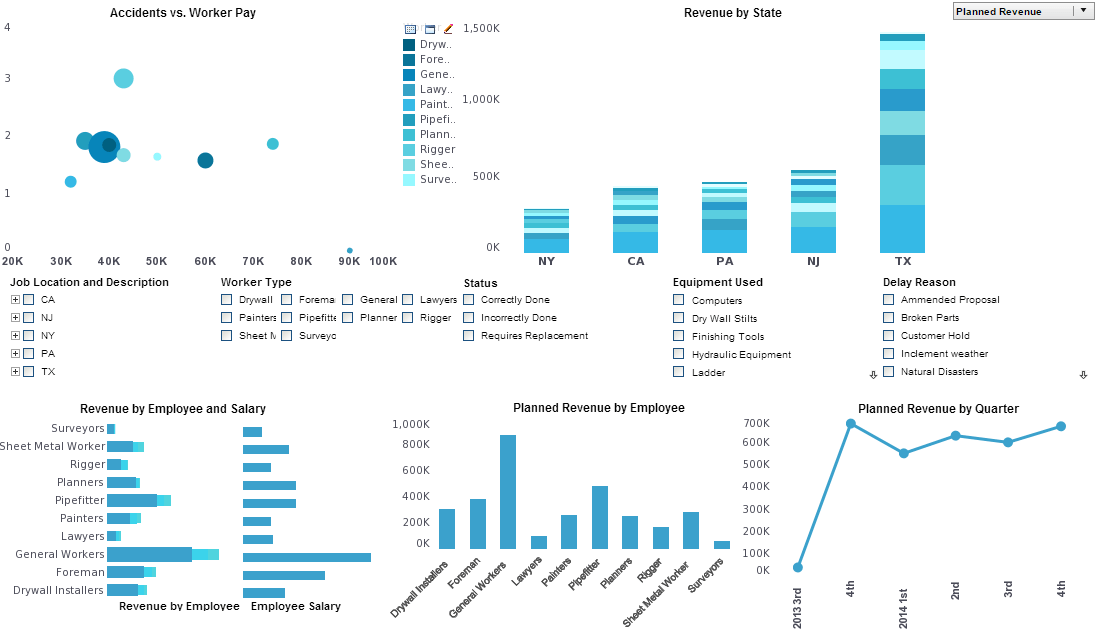Internationalization of Report Elements
With respect to internationalization report elements certain report elements have a TextID property, which associates the literal text for the element with replacement text tored in the property file, according to the Java resource bundle conventions. You can link the element text contents to the mapping name used in the file for text, textbox, chart, table, and form elements. Although it is possible to set the TextID property on an element programmatically, it is highly recommended that this operation be performed in the Report Designer (Edit → Localization).
By default, the resource bundle name is 'SreeBundle', but it is possible to use a different name by setting sree.bundle in the sree.properties file. The individual files in the bundle should end with the locale string specifying which language (and optionally which country) the replacement text is intended for.
The inetsoft.report.UserCatalog class can then be used to load the class or property file containing the replacement text and also to perform the replacement.
// Use SreeBundle_en_US.properties or // SreeBundle_en_US.class UserCatalog userCat = new UserCatalog(getPrincipal()); userCat.localize(report);
Note that when viewing a report in the Report Portal, the replacement operation is performed automatically.
Transformation
Style Intelligence provides a CatalogVerifier file to convert older version 6.5 properties files to a resource bundle that is compatible with the latest version. This tool is known as the CatalogVerifier and the usage syntax is as given below.
java inetsoft.util.CatalogVerifier
Transform
We use the following syntax to transform a version 6.5 properties file to a resource bundle compatible with the latest version.
java inetsoft.util.CatalogVerifier -v 6.5 [file_old_properties] [file_new_properties] [mismatch.txt]
where [file_old_properties] is your locale properties file, [file_new_properties] is the combined new resource bundle. Here the mismatch.txt file contains all the mismatch between the old property file and the new resource bundle that are not needed and hence not contained in the resource bundle. If the mismatch.txt file is not specified, these differences are printed in the user console.
Comparison
We use the following syntax to compare a user defined properties file (“user.properties”) with the default resource bundle file.
java inetsoft.util.CatalogVerifier [file_user_properties] [mismatch.txt]
The mismatch.txt file contains all of the mismatches between the user defined properties file and the default resource bundle. If mismatch.txt is not specified then all the mismatches are printed in the console.
More Articles About Reporting
Deploying Enterprise Dashboard Software - What I am going to go through now is just a very quick example of actually building one of those dashboards from scratch. I am going to just use a data mashup that I have already put together, and then I will circle back and show you an example of building a data mash-up. So right now, on the left hand side, I have got some components in my toolbox. I have got the data. These are the blocks from my data mashups. And on the right hand side, I have got my dashboard design canvas. So it's really as simple as this. Just drag a few components out. Let's drag a selection list over here. I'll add a chart over here. And so now I have to connect it to data...
Drawbacks of JasperReports - JasperReports is a widely used open-source reporting library that allows developers to add reporting capabilities to their applications. While JasperReports offers various advantages, it's important to consider potential drawbacks as well. Here are some drawbacks associated with JasperReports: Learning Curve: JasperReports has a steep learning curve, especially for beginners. Creating complex reports may require a good understanding of the JasperReports library, its XML-based report templates, and the associated concepts. This might pose a challenge for developers who are new to the tool...
Interconnected Business Intelligence - Business intelligence consists of a series of interconnected projects. Basically it's a program made of interconnected, interrelated projects, and that means that documentation is mandatory, you have to have that documentation carry forward from project to project to project. Also the good news is you are going to be generating lots of technical metadata, out of your ETL processing, your data quality processing, data modeling and so forth. And all of that information is very, very useful to the next project coming on board...
Looking for the Best Dashboard Company - Are you researching top dashboard companies? Since 1996 InetSoft has been making dashboard software that is easy to deploy and easy to use, serving over 5,000 customers to date. Build self-service oriented dashboards quickly. View a demo and read customer reviews. Customers have switched from other dashboard companies including: Tableau (salesforce.com) Power BI (Microsoft) Domo iDashboards Logi Analytics YellowfinBI Cognos (IBM) Oracle...
Metrics for Amazon.com Sellers - Selling products on Amazon.com involves managing various aspects of your business, from inventory and pricing to customer feedback and sales performance. To effectively monitor and optimize your performance as an Amazon seller, you need to track a range of key metrics. Here are some important metrics that Amazon.com sellers typically monitor: Sales Performance Metrics: Total Sales: The overall revenue generated from selling products on Amazon.com. Sales by Product: Sales performance broken down by individual products or product categories. Sales Velocity: The rate at which your products are selling over a specific period, indicating demand and popularity...
Tangible ROI for Business Analytics - How do companies generate a tangible ROI from business analytics? This is a question that I frequently get from the end users that I talk to. Obviously, for this particular discussion, we are talking about ROI from two different perspectives, again from the perspective of the ultimate end user of the technology, but then also the ROI from the perspective of a software provider looking to add these capabilities. I think Nick did a great job of talking about that type of perspective of ROI and certainly, I would look for any other thoughts that he has on that. But from the end user perspective, when it comes to ROI, it's obviously something that is difficult to quantify sometimes...
| Previous: Localization of Reports |


